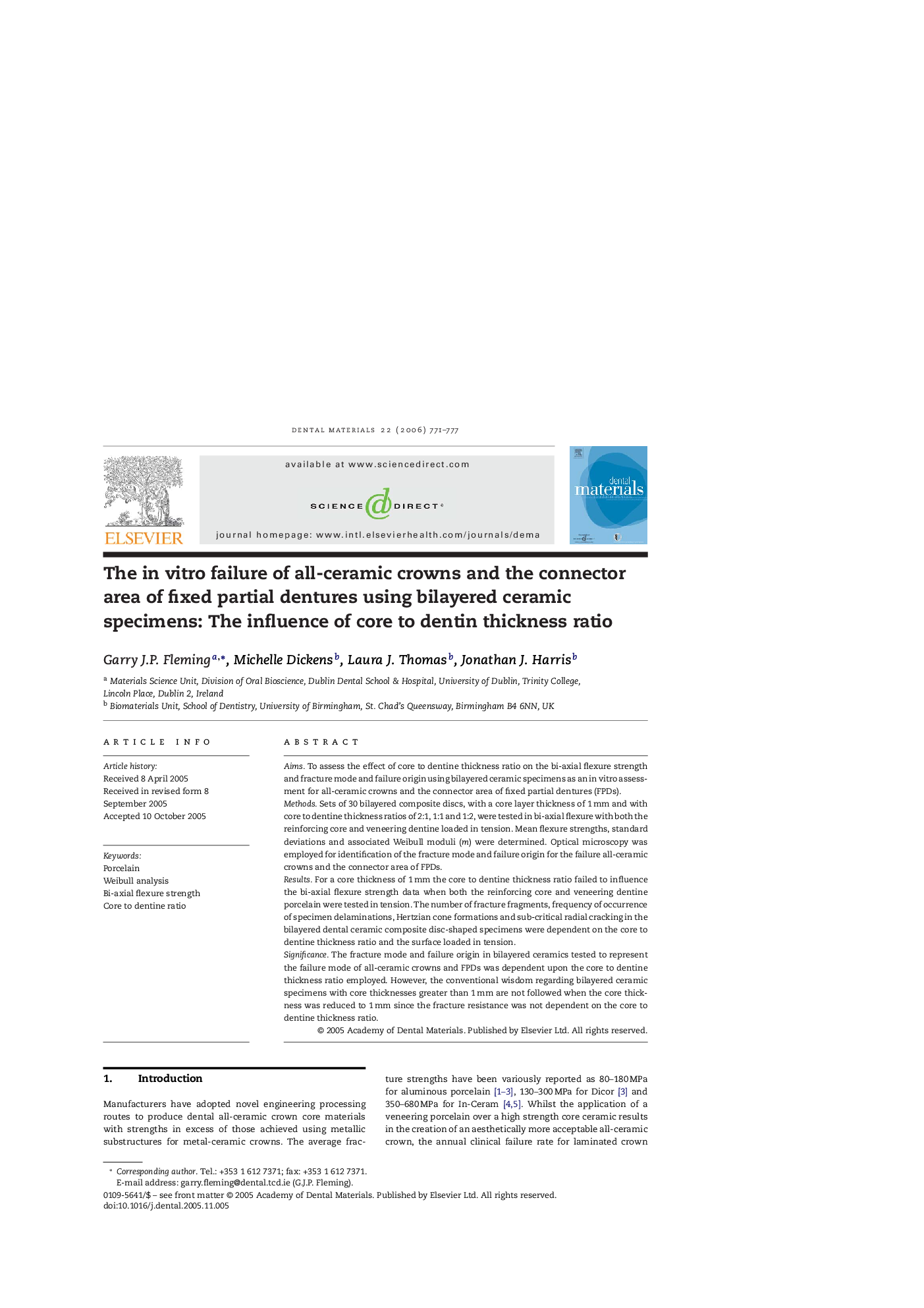| Article ID | Journal | Published Year | Pages | File Type |
|---|---|---|---|---|
| 1423181 | Dental Materials | 2006 | 7 Pages |
AimsTo assess the effect of core to dentine thickness ratio on the bi-axial flexure strength and fracture mode and failure origin using bilayered ceramic specimens as an in vitro assessment for all-ceramic crowns and the connector area of fixed partial dentures (FPDs).MethodsSets of 30 bilayered composite discs, with a core layer thickness of 1 mm and with core to dentine thickness ratios of 2:1, 1:1 and 1:2, were tested in bi-axial flexure with both the reinforcing core and veneering dentine loaded in tension. Mean flexure strengths, standard deviations and associated Weibull moduli (m) were determined. Optical microscopy was employed for identification of the fracture mode and failure origin for the failure all-ceramic crowns and the connector area of FPDs.ResultsFor a core thickness of 1 mm the core to dentine thickness ratio failed to influence the bi-axial flexure strength data when both the reinforcing core and veneering dentine porcelain were tested in tension. The number of fracture fragments, frequency of occurrence of specimen delaminations, Hertzian cone formations and sub-critical radial cracking in the bilayered dental ceramic composite disc-shaped specimens were dependent on the core to dentine thickness ratio and the surface loaded in tension.SignificanceThe fracture mode and failure origin in bilayered ceramics tested to represent the failure mode of all-ceramic crowns and FPDs was dependent upon the core to dentine thickness ratio employed. However, the conventional wisdom regarding bilayered ceramic specimens with core thicknesses greater than 1 mm are not followed when the core thickness was reduced to 1 mm since the fracture resistance was not dependent on the core to dentine thickness ratio.
